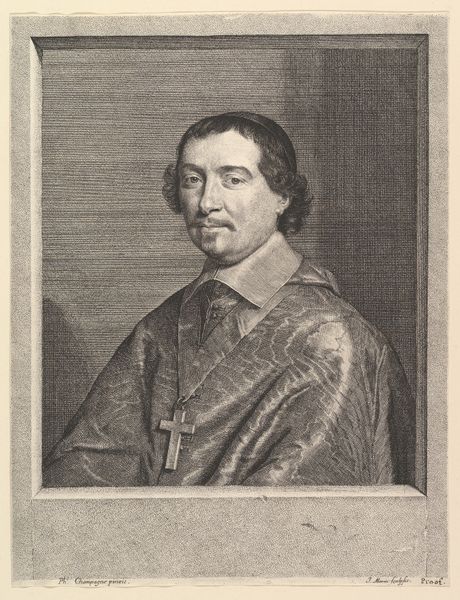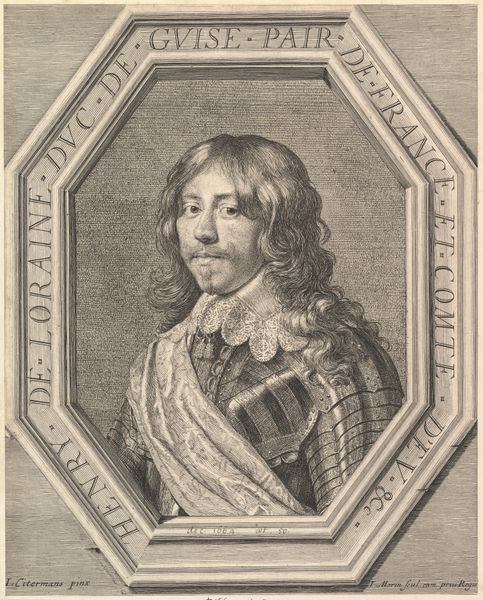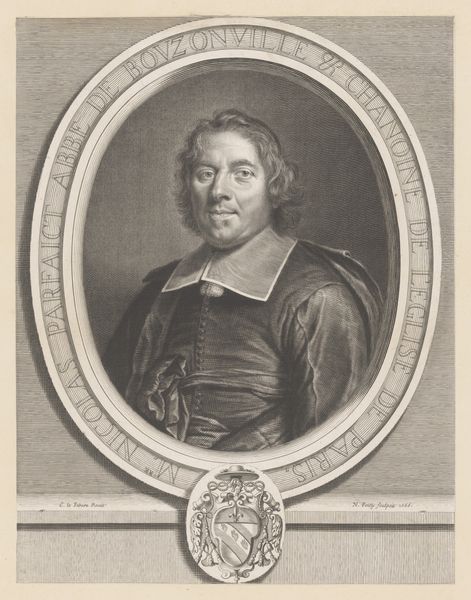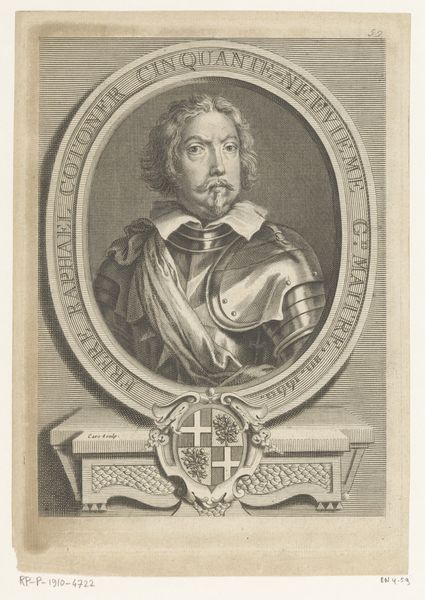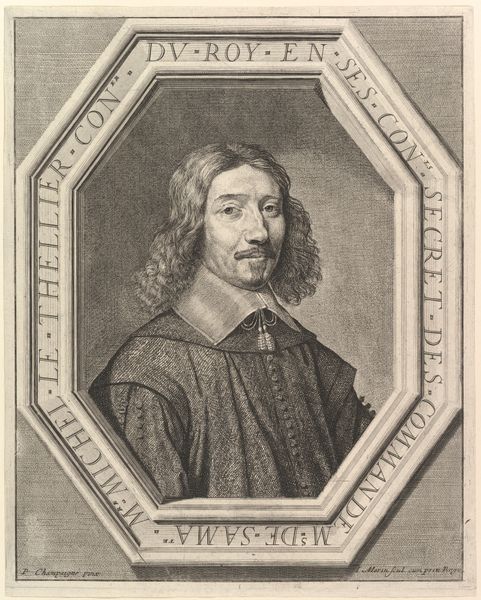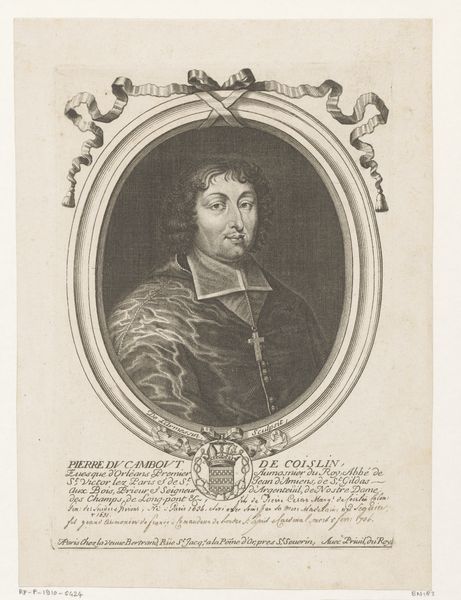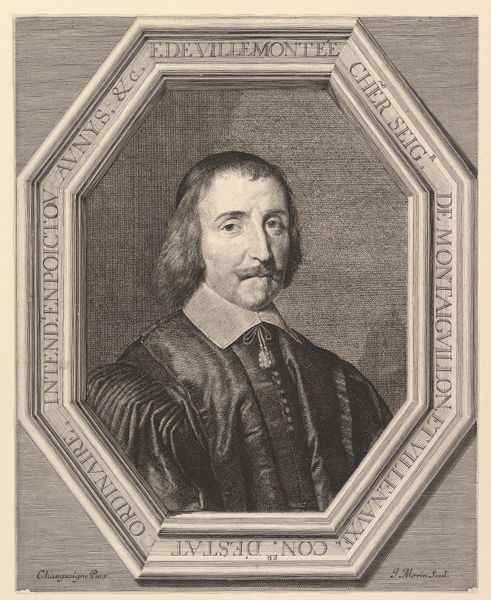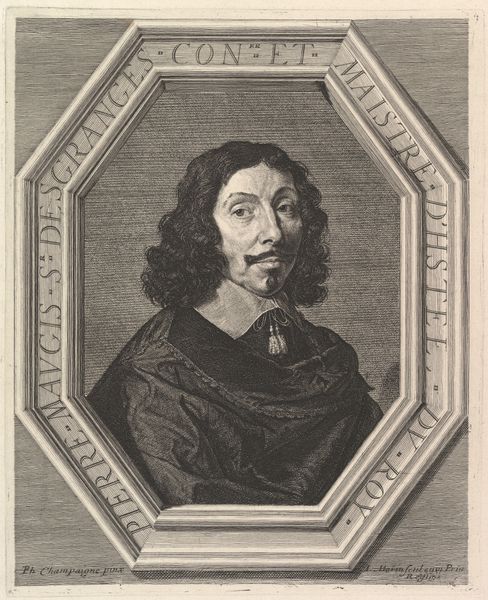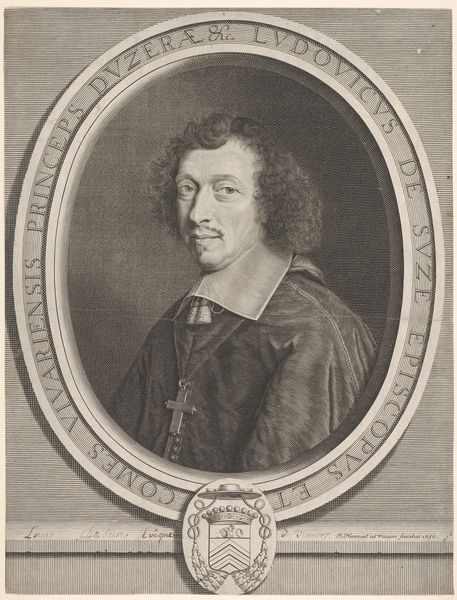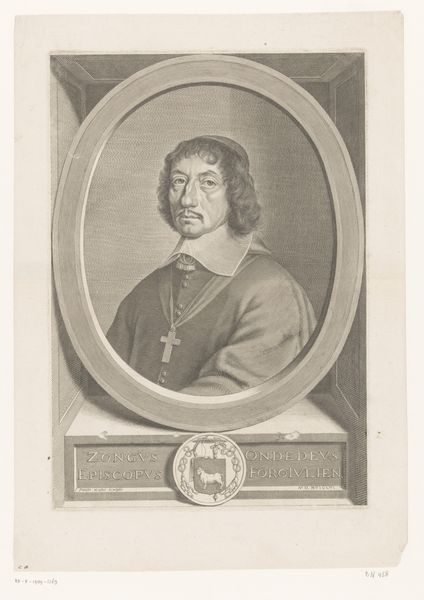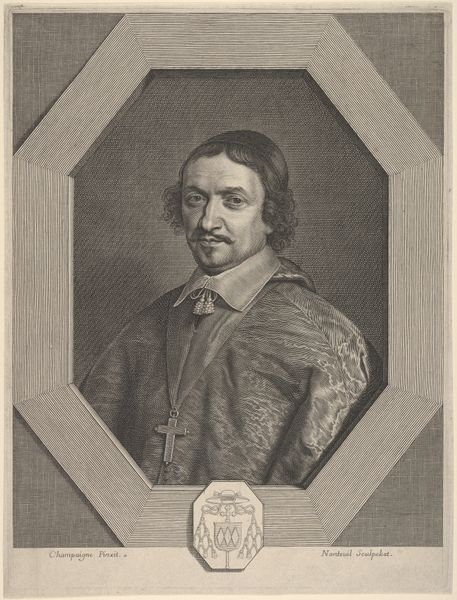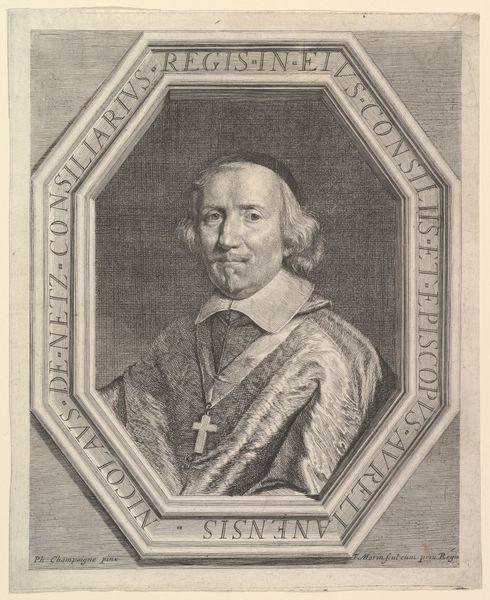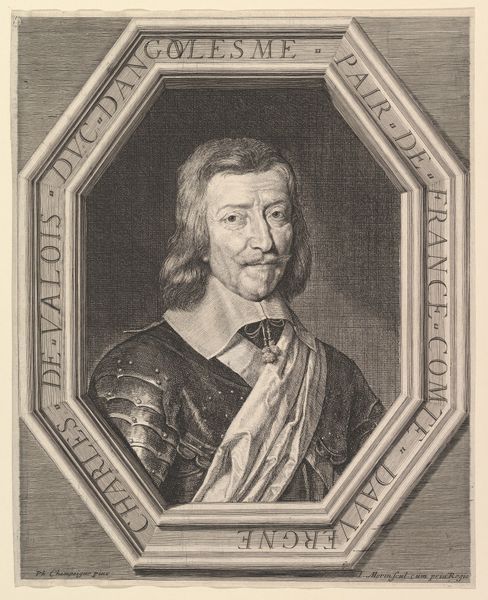
Jean-Francois-Paul de Gondy, coadjuteur de l'archeveque de Paris, futur cardinal de Retz 1605 - 1650
0:00
0:00
drawing, print, engraving
#
portrait
#
drawing
#
baroque
# print
#
men
#
history-painting
#
engraving
Dimensions: image: 12 1/16 x 9 3/4 in. (30.7 x 24.8 cm)
Copyright: Public Domain
This print of Jean-Francois-Paul de Gondy was made by Jean Morin sometime before 1650 using engraving. Engraving is an intaglio process, meaning the image is incised into a plate – traditionally copper, but steel is also used. The engraver uses a tool called a burin to manually cut lines into the metal. The depth and width of these lines determine the darkness of the printed image. It is a painstaking process, demanding great skill. This laborious method speaks to the social and political status of the sitter, imbuing the artwork with cultural significance. Engraving was especially valued for reproducing portraits, because the fine lines could capture subtle details of the face and costume. In this portrait, we can see the textures and weight of the sitter’s garments and the contours of his face. This print, like many others, served as a form of currency, circulating images of power and influence within the social sphere of 17th-century France. It reminds us that the value of art extends far beyond the aesthetic, reflecting power, labor, and social context.
Comments
No comments
Be the first to comment and join the conversation on the ultimate creative platform.
